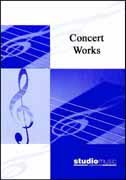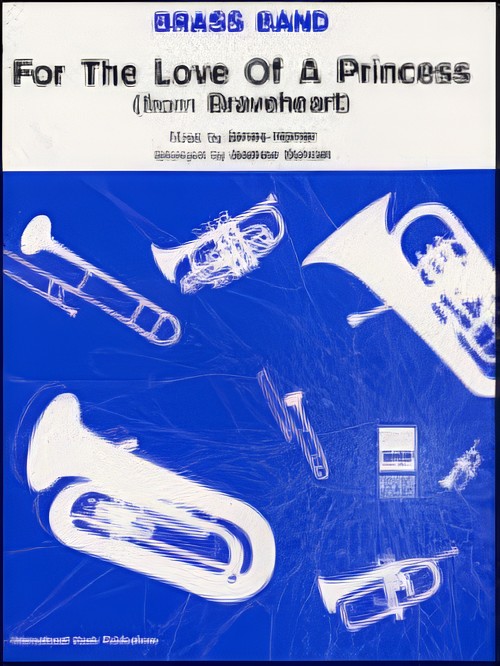Results
-
 £42.95
£42.95BENEDICTUS (from The Armed Man (A Mass for Peace)) (Euphonium Solo with Brass Band) - Jenkins, Karl - Small, Tony
Recorded on Polyphonic QPRL224D Master Brass (Volume Seventeen)
Estimated dispatch 7-14 working days
-
 £24.95
£24.95BLACK BULL, The (Brass Band Marchcard) - Barry, Darrol
Marchcard size. Duration 4:15. Recorded on Polyphonic QPRL221D Sunburst
Estimated dispatch 7-14 working days
-
 £42.95
£42.95COLORS OF THE WIND (Brass Band) - Sparke, Philip
from Pocahontas. Recorded on Polyphonic QPRL084D Light as Air
Estimated dispatch 7-14 working days
-
 £49.95
£49.95CORSAIR, The (Overture)(Brass Band) - Berlioz, Hector - Brand, Geoffrey
Recorded on Polyphonic QPRL228D Master Brass (Volume 19), QPRL219D Master Brass (Volume 15), QPRL218D Master Brass (Volume 14). Duration: 7:45.
Estimated dispatch 7-14 working days
-
 £26.50
£26.50COSSACK, The (Brass Band Marchcard) - Rimmer, William
Marchcard size. Recorded on Polyphonic QPRL219D Master Brass (Volume Fifteen). Duration: 5.00.
Estimated dispatch 7-14 working days
-
 £32.95
£32.95ENTRY OF THE GLADIATORS (Brass Band) - Fucik, Julius
Recorded on Polyphonic QPRL056D National Brass Band Championships of Great Britain and Gala Concert - 1992
Estimated dispatch 7-14 working days
-
 £69.95
£69.95FANFARE FOR THE COMMON MAN / HOE DOWN (Brass Band - Score and Parts) - Copland, Aaron - Snell, Howard
Hoe Down Recorded on Polyphonic QPRL073D Master Brass (Volume Six)
Estimated dispatch 7-14 working days
-
 £32.95
£32.95FANFARE FOR THE COMMON MAN / HOE DOWN (Brass Band - Score only) - Copland, Aaron - Snell, Howard
Hoe Down Recorded on Polyphonic QPRL073D Master Brass (Volume Six)
Estimated dispatch 7-14 working days
-
 £39.99
£39.99For the Love of a Princess (Brass Band - Score and Parts) - Horner, James - Duncan, Andrew
A spectacular Brass Band arrangement of James Horner's love theme from Braveheart in full score and parts. Ideal for school concert bands, arranged by Andrew Duncan.Suitable for Advanced Youth/3rd Section Bands and aboveRecorded on Polyphonic QPRL220D Master Brass (Volume 16)Duraton: 4.00
Estimated dispatch 7-14 working days
-
 £37.95
£37.95GIRL I LEFT BEHIND ME, The (Brass Band) - Sparke, Philip
Recorded on Polyphonic QPRL229D Ovation!
Estimated dispatch 7-14 working days
